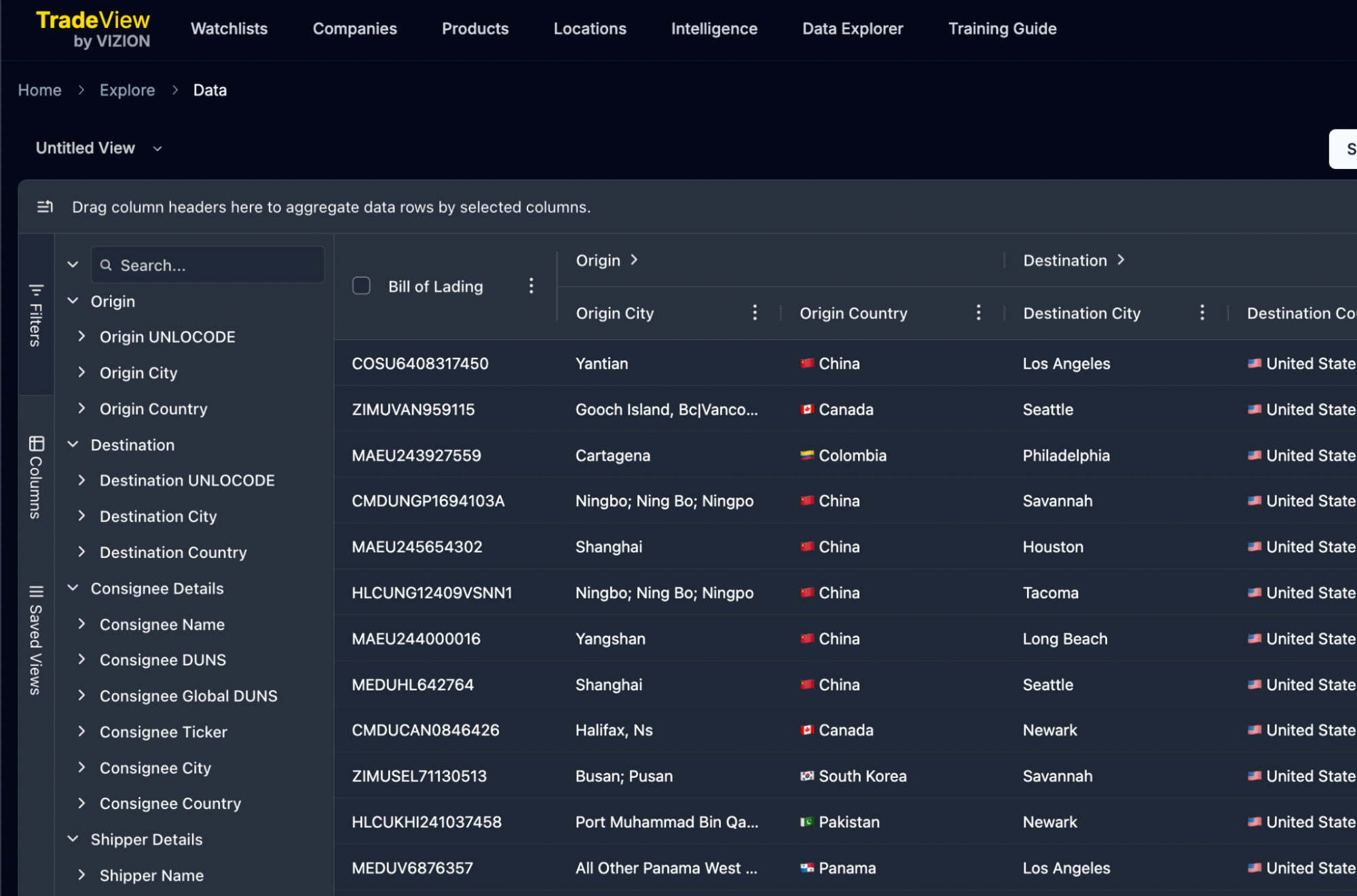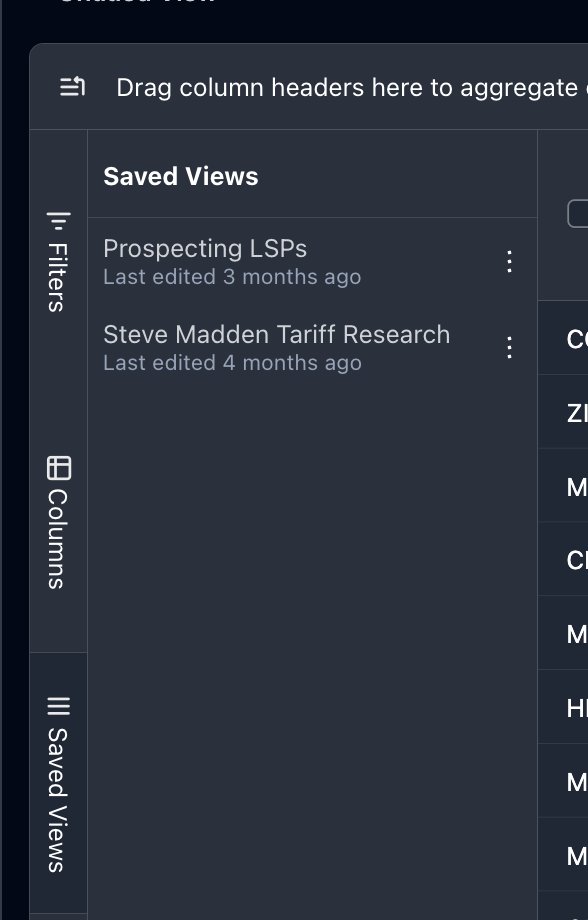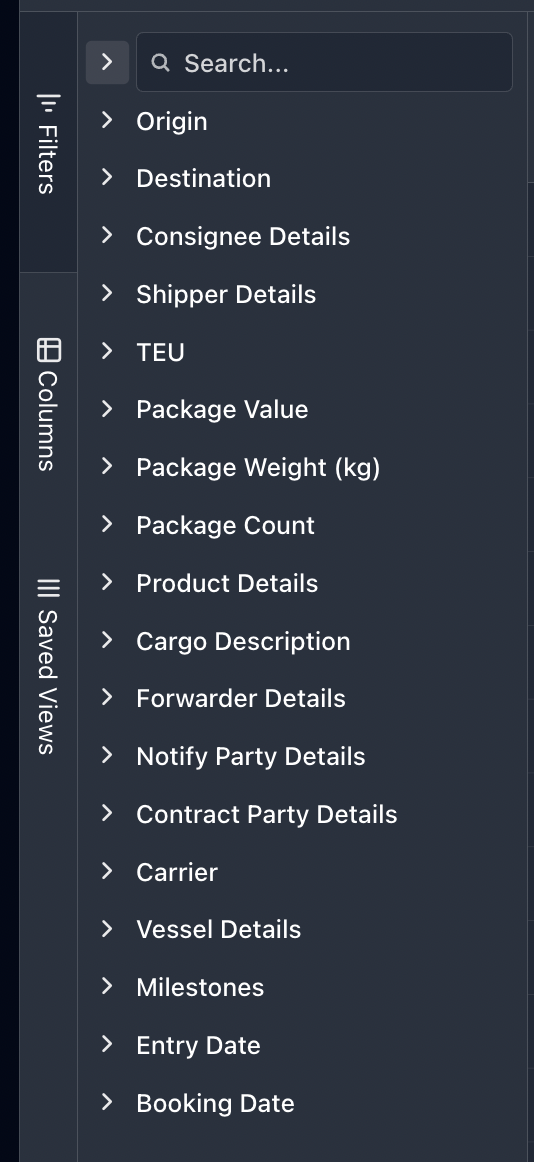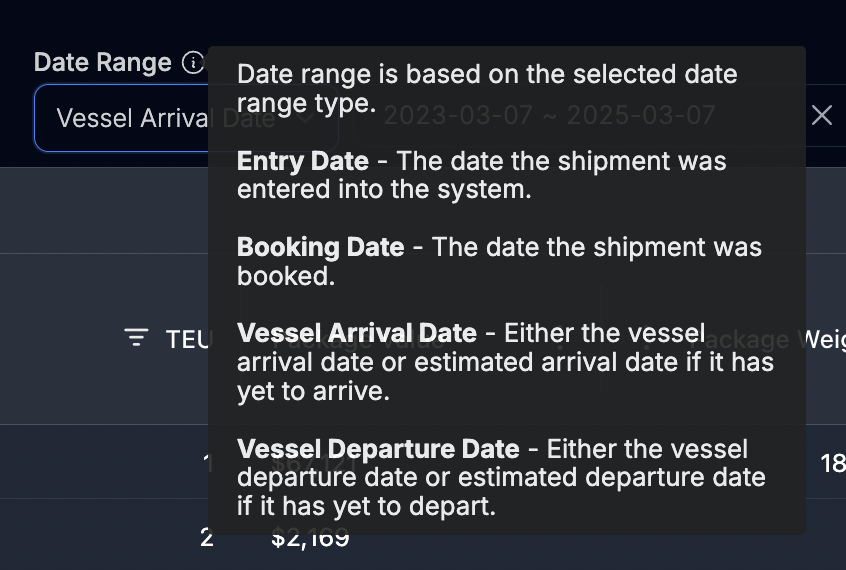Data Explorer
Selecting Data Explorer from the top bar navigation is the most common way to access this powerful and complex searching tool. You can also access a specific view within Data Explorer by selecting Explore from within a Company / Corporate Group page, or a Location Page. Welcome to the world’s most powerful pivot table!

Data explorer is intended to allow deep, detailed, and complex query-building - all the while empowering you to organize your rows and columns accordingly. The first thing you will want to pay attention to is the menu of search Filters on the right hand collapsible pane. These filters are what will allow you to modify your query, create thresholds for upper and lower bounds of volume, look for specific vessels, Bills of Lading, or companies, and even search for keywords in open text fields like Cargo Description.

There are pre-built Saved Views (also in the right hand collapsible pane), and any searches you build can be saved under Saved Views by clicking on the Save button near the right hand margin of the page. One important thing to note is the date selection in the upper right, just near the Save button. This will specify Entry Date as Past Year (rolling 12 months) upon initial load, and can be modified to include even just one single day. Entry Date is defined as the date that the shipment was last updated. More historical data can be made available within Data Explorer upon request. TradeView contains shipment data back to January 2014, but by default to maintain application performance, the initial view can go back 12 months. You can also filter by Booking Date (the date the shipment was created), Vessel Arrival Date (the date that the vessel arrived to the Destination Port), and Vessel Departure Date (the date that the vessel departed from the Origin Port.

Once you have built your search, selected your filters (be sure to hit “Apply” to each selection), you can now customize your view by selecting the Columns option in the right hand collapsible pane. Simply drag your columns into Row Groups, with the top Column as the identifier you would like to group totals by. Any columns added beneath that will be grouped second. Drag any quantifiable values (i.e. TEU, cargo weight, cargo value) under Values to display those totals. You can simply uncheck the columns you would like to hide, or check columns you would like to see. Note that each column has an ellipsis that you can click to sort descending, ascending, alphabetically, or apply any other filters as you would with a Microsoft Excel file.
Use date range selector and the type of date to narrow your results.

When you have your search filters applied and columns and rows organized correctly, be sure to click Save in the upper right of the table. You can title your View, and even offer a description beneath it. By default, Saved Views are not shared across users, but upon request, we can share Saved Views across Users belonging to the same organization.
Exporting your view is as easy as clicking the downward pointing arrow in the far right on top of the table. You can export as a CSV or XLS file. Dragging the columns by highlighting with your mouse (or CTL + A) will select all cells to load into a chart. Simply right click, then select Charge Range, and choose from available Pie, Column, Line, or Bar charts. These can be downloaded as PDF or .JPEG files.
Updated 3 months ago